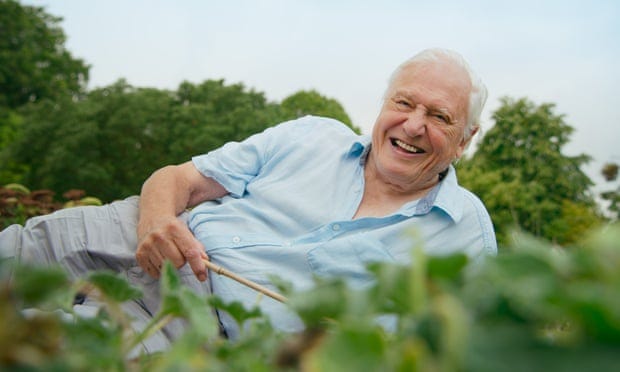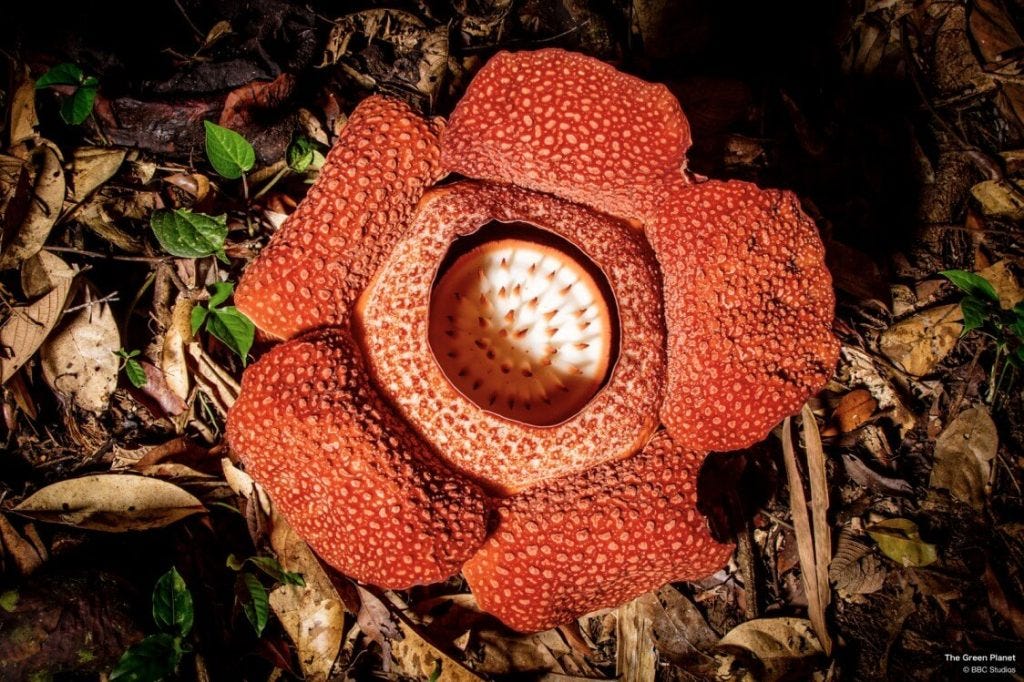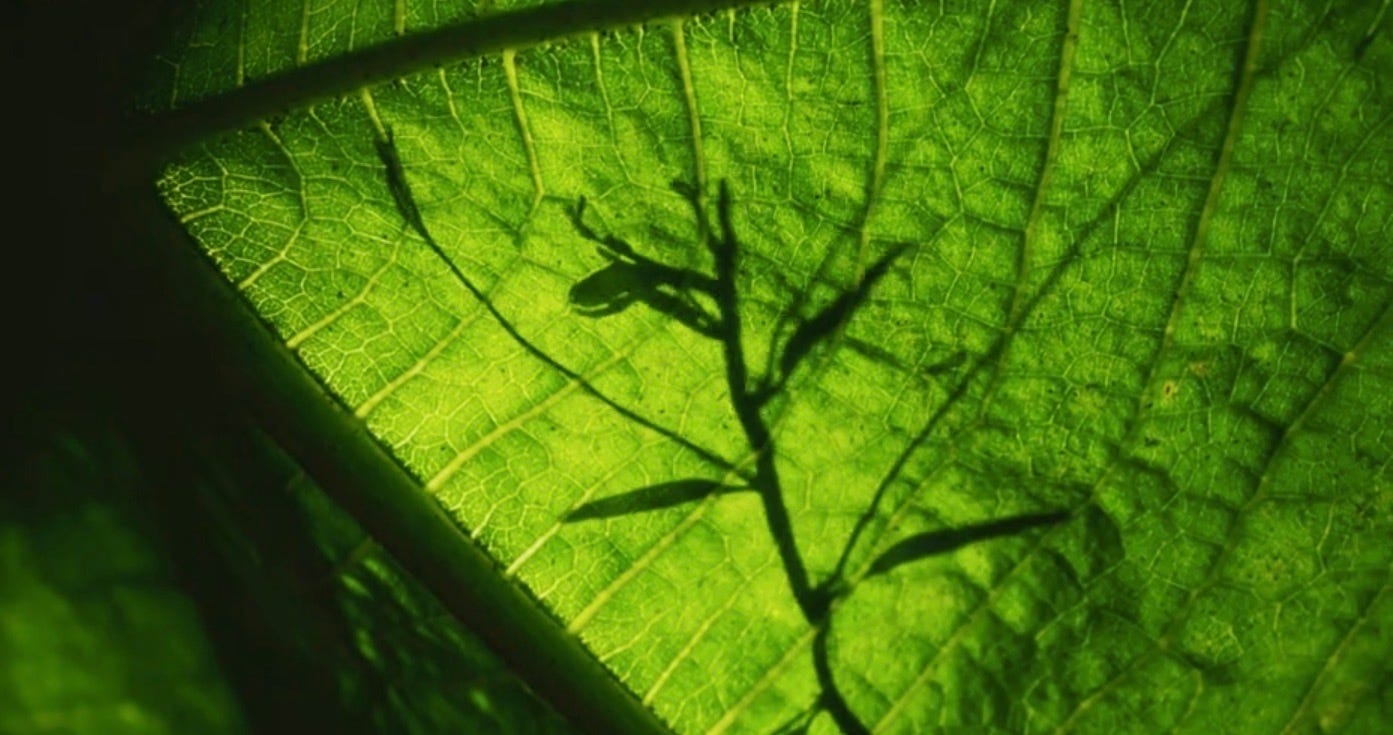My very major beef with David Attenborough’s Green Planet
Attenborough is my hero, but he got one thing dangerously wrong in his latest series
You’re reading The Earthworm, a brand new newsletter that takes a sideways look at the world of gardens, gardening, horticulture and all that good green stuff. If this is your first time here, you can catch up on anything you’ve missed by following this link. Subscribe now for free and join the community!
I’m generally minded to avoid receiving online abuse, death threats, so on and so forth. As such, I should probably clarify at this early juncture that I do not hate David Attenborough. I’ve been wracking my brain for a few minutes and actually, I can’t think of a single person alive today who I admire more.
David Attenborough is untouchable. In a broadcast career spanning 70 years (70 years!!), he has moved multiple generations of viewers to admire, respect and protect our Blue Planet. And our Planet Earth. And our Frozen Planet. And our Planet Earth II.
It’s hard to quantify the impact that Attenborough has had on my own passion for our planet and all of its non-human inhabitants. Suffice to say it was foundational. From as early as I can remember, I would watch, enthralled, as he narrated sometimes thrilling, sometimes funny, sometimes tense, but always powerfully visceral scenes of the animal kingdom’s Darwinian fight for survival. How could anyone watching this not be inspired by the intricately intertwined, fragile majesty of nature?
So imagine my childlike glee when I saw the first trailers for his latest series, The Green Planet, which would shine a light on some of the most remarkable plant life from across the globe. Using state-of-the-art time-lapse photography, the series was able to show the life cycle of plants not at the glacial, imperceptibly slow pace that we’re accustomed to, but at a fast-forward tempo more palatable for our tiny human minds.
That was always going to be the greatest challenge faced by a film crew making a series about plants: How do you make it exciting? On the face of it, plants and telly just don’t fit. They’re incompatible. TV is fast. Plants are slow. And as garden designer Jo Thompson pointed out in my interview with her last week, for most people it is precisely this slowed down pace wherein lies the appeal of gardening, of plants, of the natural world in general.
If it is to be truly enjoyed, appreciated and understood, nature demands stillness. TV audiences, not so much. Vegetation and light entertainment exist in different dimensions. That Attenborough and his production team were able to transport viewers from one to the other is without question The Green Planet’s greatest achievement.
I recently heard Michael Gunton, creative director of the BBC’s Natural History Unit and executive producer on The Green Planet, express this really nicely. Speaking on the latest episode of The Plant Based Podcast, he said: “[Plants] actually are living in this parallel universe, where all sorts of stuff is happening, but we don’t sense it… For this series, we had to become time travellers, and you the audience have to become time travellers, to understand what goes on in the plant world.”
Well, they absolutely pulled it off. The show’s technically masterful, hyperspeed animation brings static-seeming plants to life. More than that, it gives them character. When we see wild oat seeds “walk” away from their parent plant in search of a suitable spot to germinate, we are mesmerised; we are rooting for this creepy-crawly seed to complete its quest to find a new home. How do you make a grass seed relatable to a human audience? Give it a mission! (And a pair of legs.)
So far, so cute. But this, for me, is also The Green Planet’s greatest flaw, and the source of my very major beef with Sir Dave & Co’s story-telling approach.
Sequence after sequence throughout the five-part series is framed in human terms. Like characters in a film, the plants on screen are given motivation, agency, and must of course face fistfuls of jeopardy.
Take episode one, Tropical Worlds. Within the first 10 minutes, the tone has been set for the five hours of telly that will follow. We are introduced to a balsa sapling, growing in a patch of forest floor newly bathed in light following the collapse of an old tree. Attenborough’s trademark narration begins (it’s more fun if you do the voice in your head):
“[The balsa’s] giant leaves are already 40 centimetres across and are stealing the light from its rivals below. But the balsa’s battle is not yet won. Other, different vines are lying in wait. Each is armed with dozens of claw-like hooks. If just one hook gets a grip, the vine will be able to smother its victim.”
At this point, the string section in the Benji Merrison and Will Slater-composed score enters full Hollywood mode. We see a vine in silhouette, arms aloft with all the sinister intent of Norman Bates lurking behind the motel shower curtain. The vine is preparing to strike. The Hungarian Studio Orchestra’s cellists are burning through their bowstrings. Then BOOM! Plot twist. The voice continues:
“But the balsa is defended by a shield of slippery hairs. The vine’s hooks just can’t get a hold. The balsa brushes them aside and continues to rush skywards, leaving the losers in its shadow to fight among themselves. This balsa has won its battle for the light.”
It’s a fun sequence! It’s exciting! Who will win the fight? Our hero, the young balsa tree, or this murderous strangling vine? My heart’s in my mouth! I can’t watch, but I can’t look away! Alright, that’s enough of that – let’s just stop and think about some of the language here for a second. The balsa is stealing the light from its rivals. The vine is armed, lying in wait, preparing to smother its victim. The balsa has won its battle. The other plants are losers, the lot of ‘em.
This isn’t just me reading too much into it, either. The use of this combative language is totally deliberate. Back to Michael Gunton, the show’s executive producer, speaking on The Plant Based Podcast:
“[We asked ourselves:] ‘How would you film plants if you were filming them as animals? What’s the narrative?... Where’s the conflict? Where’s the drama coming into this?’ Because you can do fascination, and you can do ‘oh that’s interesting’, or ‘that’s weird’, but drama needs conflict… [Audiences] want to know who’s going to win… Is that X going to live or die? Is it going to get a mate or not get a mate? So transferring that kind of thinking and that kind of storytelling into the world of plants was the simple mission.”
Look, I get it: having heroes and villains, winners and losers, makes for compelling television. A less emotive, less excitable, less hyperbolic telling of these same events isn’t going to make it onto Celebrity Gogglebox. But is it really helpful to talk about plants – to tell their stories – in such epic terms? Is it helpful for example, in episode two, Water Worlds, to describe the giant water lily as a “monster”? Or as a battle-hardy tyrant that “crushes” and “skewers” its enemies? What are we meant to feel about the lily? Or the thousands of plants suffocated and starved to death by its relentless expansion?
What I’m really asking here is: In whose interest is it to describe at-risk ecosystems all over the planet as battlegrounds, where warring vegetables clobber, asphyxiate and stab each other to death in an endless bloody war?
Who am I to argue with Attenborough? But in my humble, un-beknighted opinion, turning some plants into heroes and others into villains is a really unhelpful way to think about the green world. The fact is, there are no “good” plants or “bad” plants. There are just plants. Yes, these plants are often in competition with one another for limited resources, but that does not make one the aggressor nor another the victim. Is a lion a villain for hunting a gazelle?
In the untamed and untarnished plant kingdom – as in the animal one – all life exists in a delicate equilibrium, sensitive to temperature, to light, to rainfall, to altitude, and a plethora of other factors. It is a beautiful balance.
The only existential enemy faced by plant life is – you guessed it! – us. When we deem a plant to be useful, it becomes a crop. When we deem it to be pretty, it becomes ornamental. When we deem it to be a nuisance, it becomes a weed. But really plants are none of these things; they are simply plants.
OK, when it comes to telly, labelling one plant a protagonist and another an antagonist is just a story-telling device. It helps engage audiences, which in turn might raise awareness for the plight of the planet’s wild places and, who knows, might even nudge people to take action towards preserving them.
But we’re not at war with plants – or at least we shouldn’t be. Nor are plants at war with one another. All plants have their place, and no plant should need a purpose, or a narrative, to win our sympathies. Plants just are, and that should be enough.
I think the discomfort I feel about the bully/victim narrative device is that it creates favourites. It creates hierarchies. It says to people: some vegetation deserves your love and care, other stuff, not so much. And when it is humans, and our various interventions, who ultimately pose the greatest risk to literally every other species on Earth, maybe we should be clearer about who the real villains are on this green planet.
Did you watch The Green Planet? What did you think? Do you disagree with anything I’ve said? I’d love to know what you think. As ever, you can leave a comment here for the wider community to enjoy, or reply to this email to keep it between just the two of us.







I had similar thoughts. It got tiresome using that narrative throughout. We are the villans in the piece.
You've got some great points but now I'm mostly just disappointed that Green Planet won't air in the US till July. I'll have to revisit this post then!